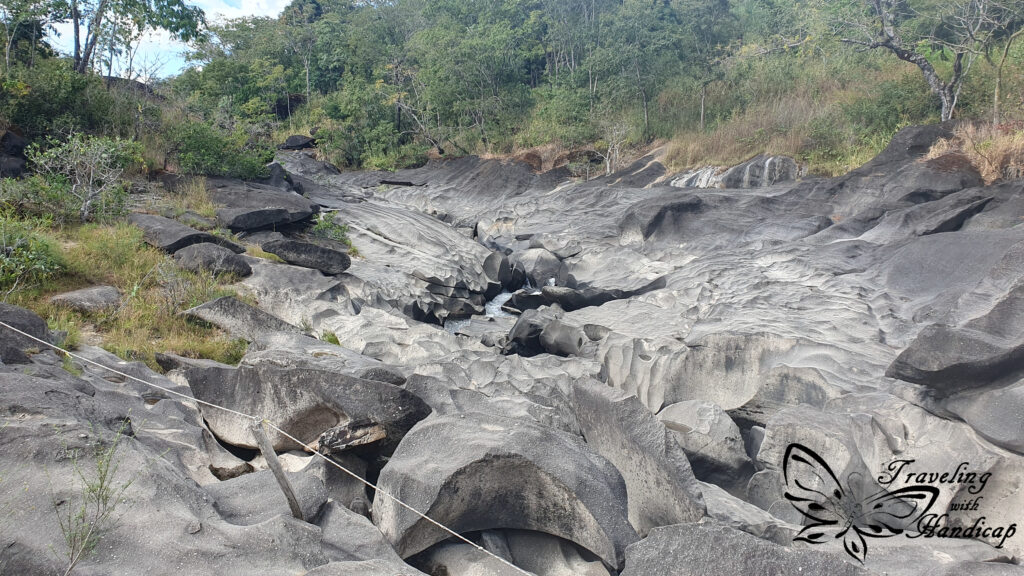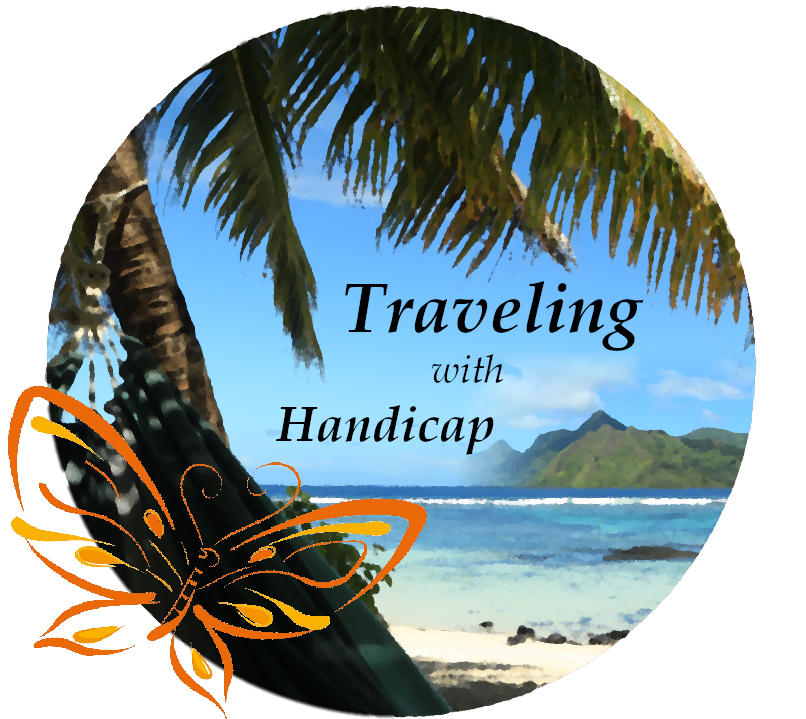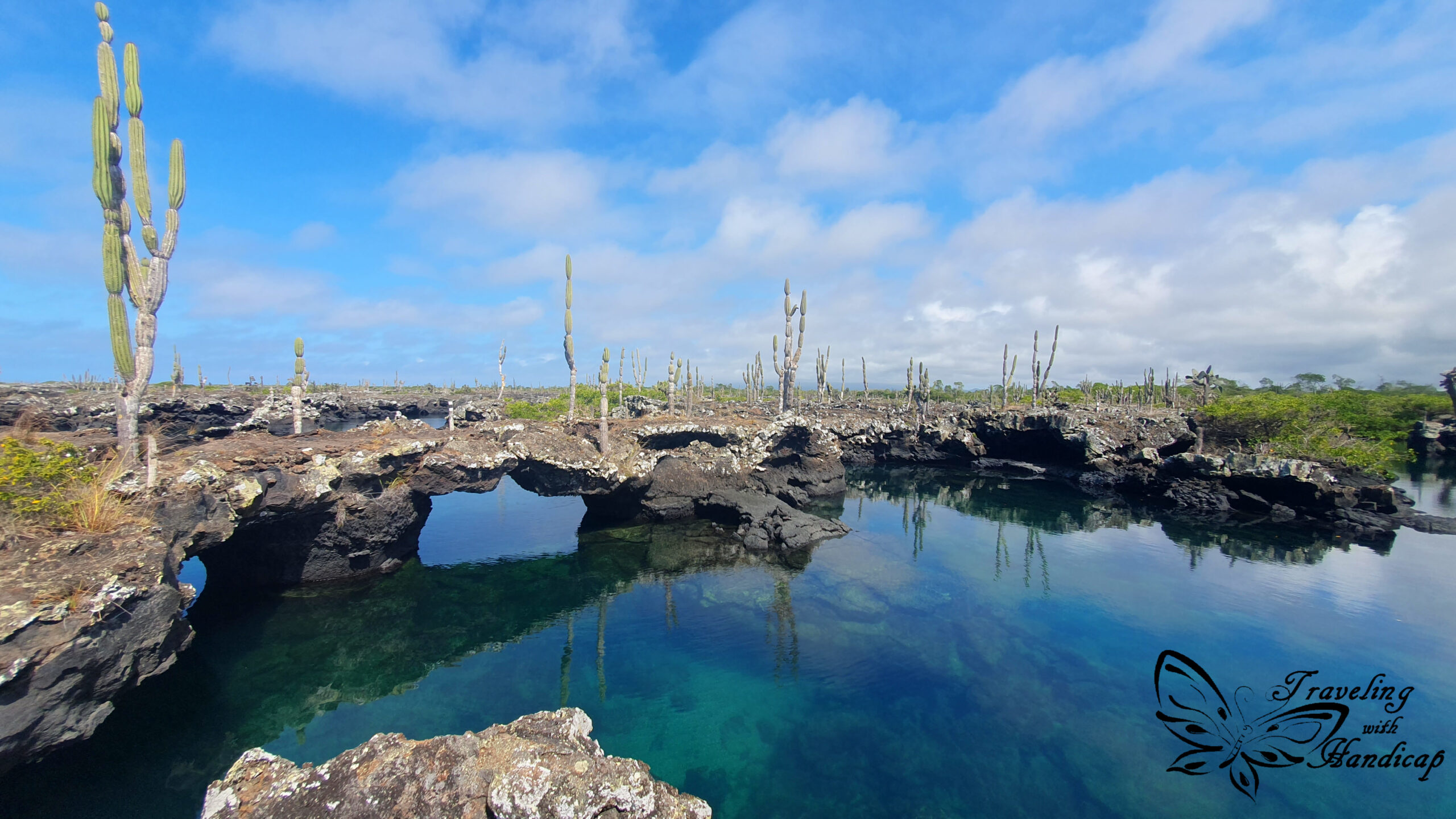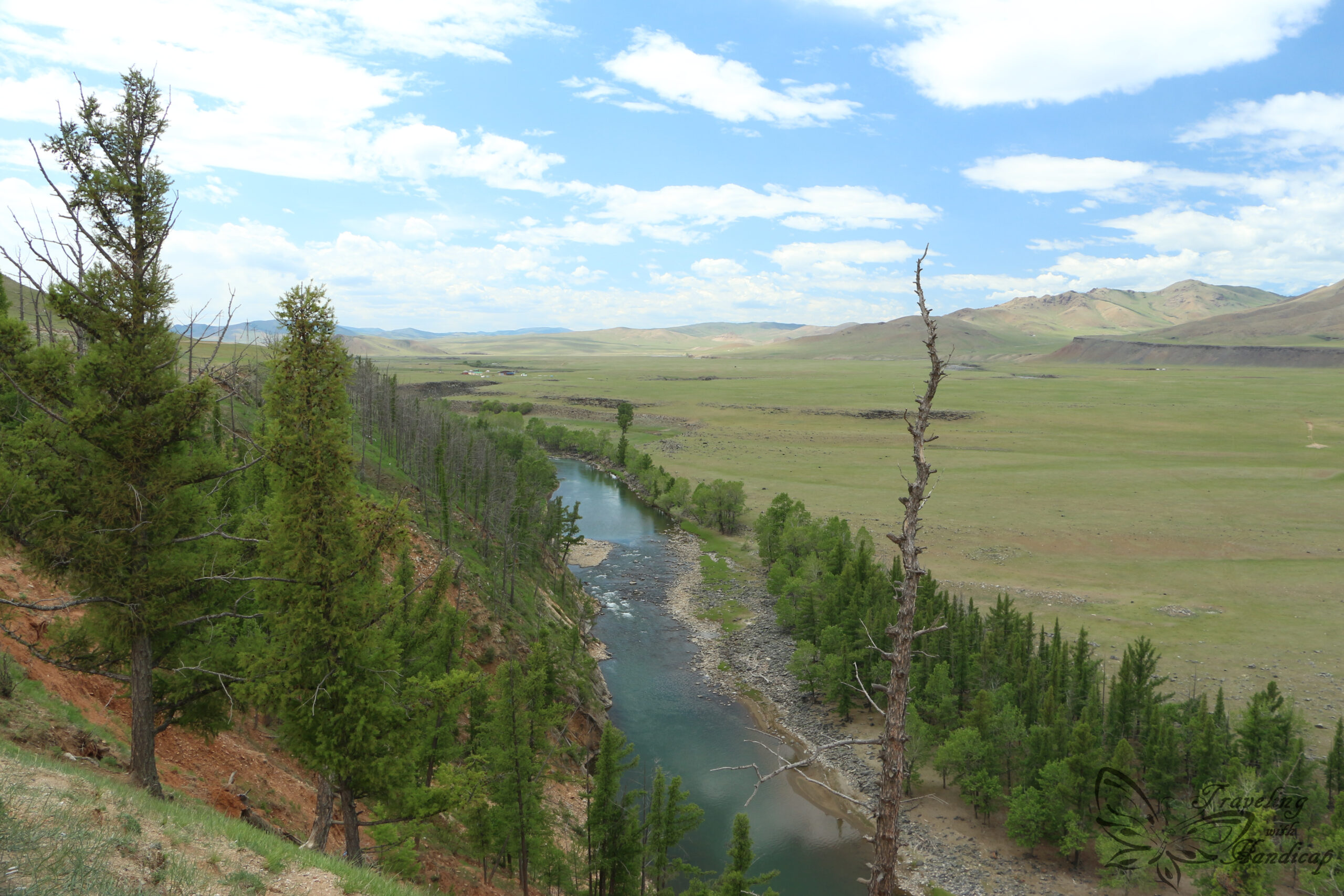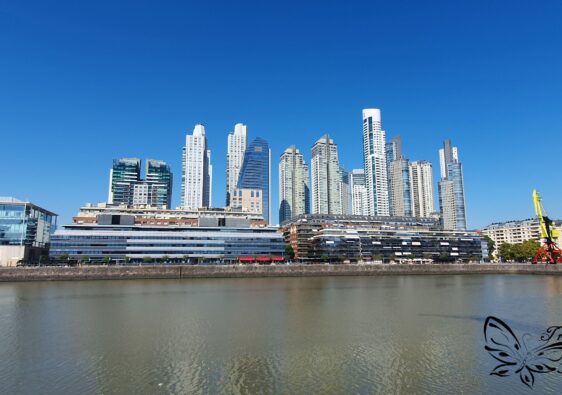We don’t receive wisdom; we must discover it for ourselves after a journey that no one can take for us or spare us.
Marcel Proust
Prior to the landing of Pedro Álvares Cabral in 1500 claiming the discovered land for Portugal, there were numerous tribal nations within the area of our days Brazil. The whole area was quite decentralized and unorganized. This is why the Portuguese king restructured them into the Governorate General of Brazil in the city of Salvador becoming the capital of a single and centralized colony. In 1808, the capital of the (entire) Portuguese Empire (Kingdom) was transferred from Lisbon to Rio de Janeiro.
Brazilian culture is influenced by Italian, German, other European as well as Japanese, Jewish and Arab immigrants arriving during the 19th and 20th centuries. Brazil’s language and cuisine is influenced by indigenous Amerindians and Africans. Africans also had influence on music, dance, and religion.


The huge presence of dark-skinned people in Brazil is a result of the many slaves from Africa. Slavery (→ Wikipedia) was quite big in Brazil, during the Atlantic slave trade era, more enslaved Africans were deported to Brazil than to any other country in the world. Brazil was the last country in the Americas to abolish slavery. And when this happened, the former slaves were just left free without any support. So the slaves had nothing when they were free from one day to the next.
Salvador de Bahia
The most impressive part of Salvador is indeed its historic center. After exploring the center, you might as well check out the great beaches. 😉 Salvador is the third-biggest city of Brazil, after São Paulo and Rio. When I arrived in Salvador, I immediately noticed that the Favelas are spread out across the whole city. It’s very difficult to identify boundaries. There is a Favela and nice big apartment buildings right next to it. The Uber drivers know which roads not to take. Nevertheless, it’s good to ask beforehand if there are any roads you should avoid. Another specialty of Salvador are the many churches, literally everywhere.



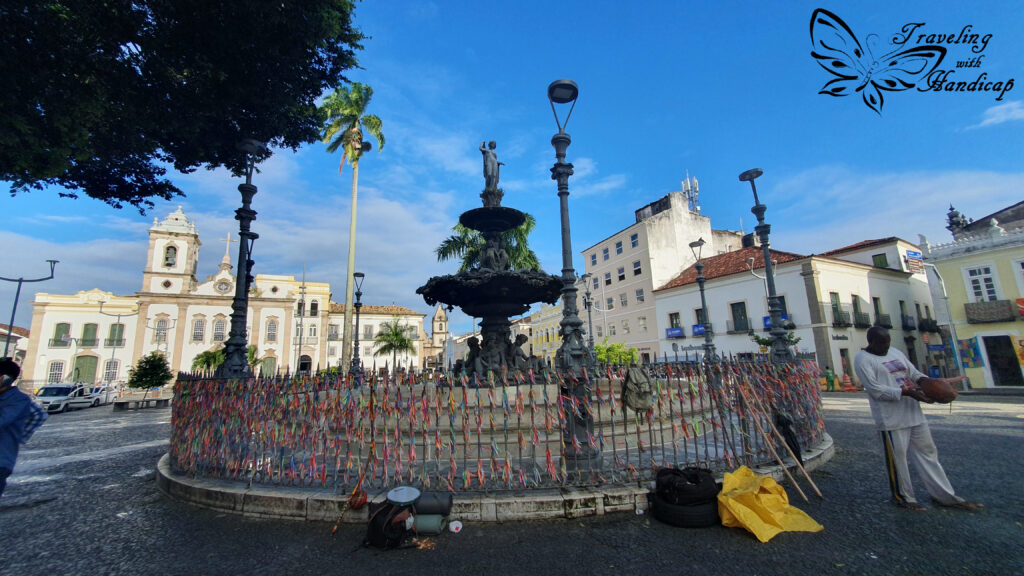
The historic center
Why the rate of criminality is extensively high in Salvador in general, the historic center is comparatively safe. Sure, robberies may happen everywhere, but apart from that, you may for sure walk around the historic center alone during daytime. Just decline any offers from the people on the road who want you to try some fruit or to play drums. Always ask if it is for free and only try if it is. As their trick is to ask for money if you didn’t ask whether it is for free.
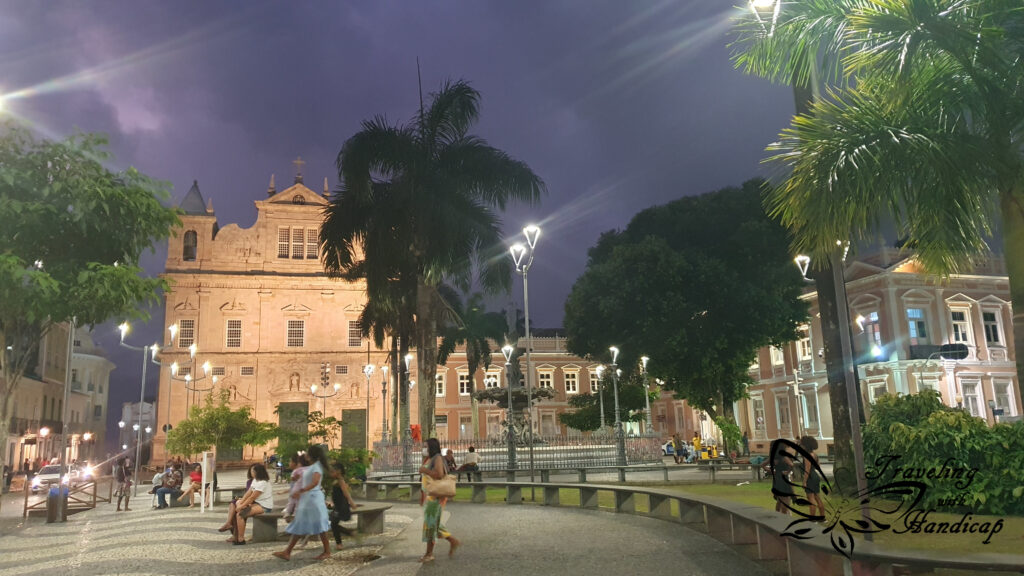


Elevator Lacerda
One of the most important monuments of Salvador is the elevator connecting the upper and lower towns. The first version has been built in 1873. I read that the poorer workers lived and worked in the lower town, the rich people in the upper town. This might be true as the colonial buildings are all in the upper town, not far from the elevator. It’s not even 50 ct to take the elevator, however, you won’t see anything as there are no glass windows. If you don’t intend to go down, you may as well just walk into the “exit” side and enjoy the view from the windows on the upper level.
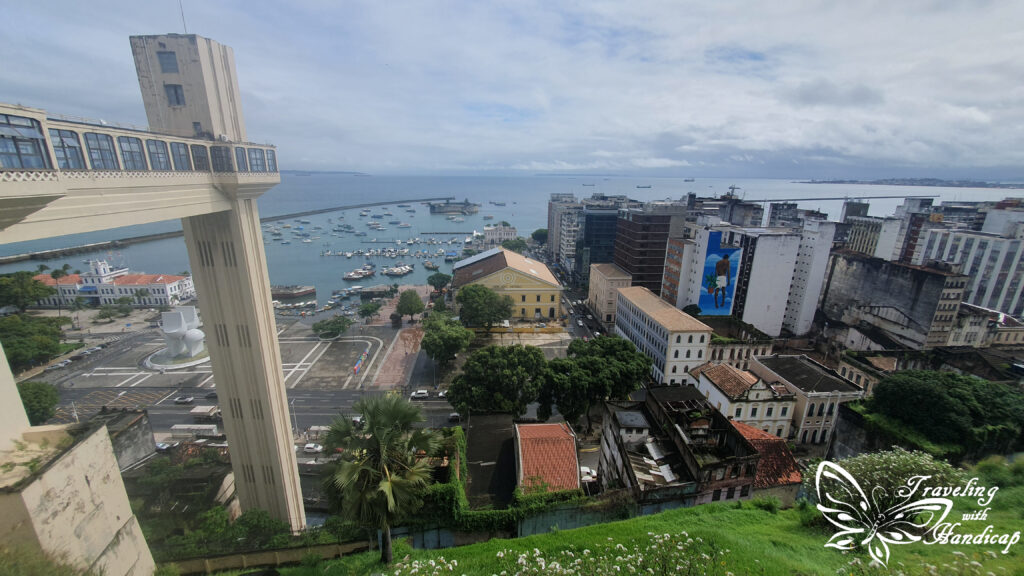

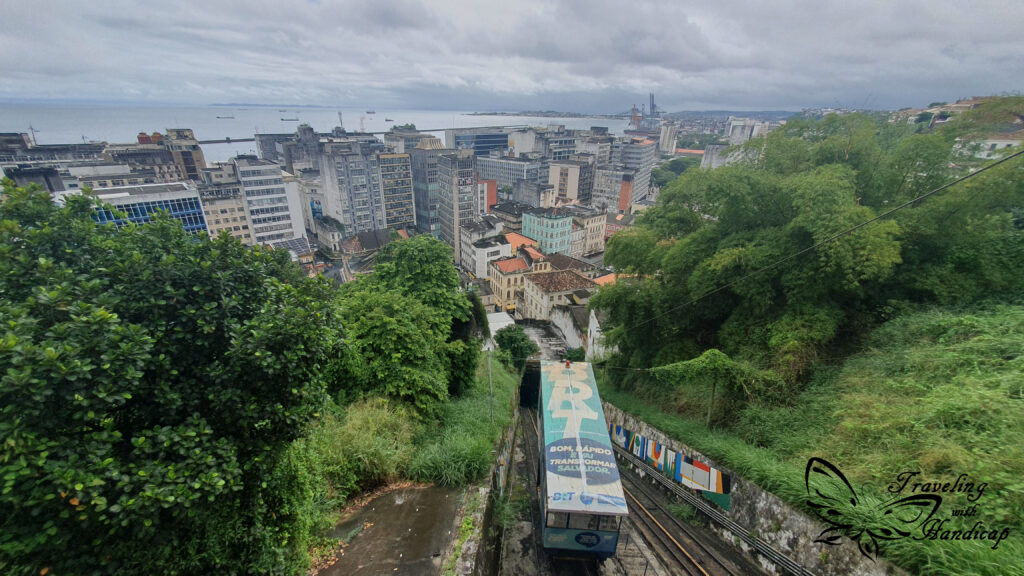
Fallen Cross Monument
The place where the Monument of the Fallen Cross is located was where the Sé Church was demolished to open space for the streetcar in 1933. Inaugurated in 1999, the Fallen Cross honors the disappearance of this old Sé Church, the Primatial of Brazil. The Fallen Cross Monument is in the old city center. Locals often say that this is where Pelourinho (→ Wikipedia, German) begins.


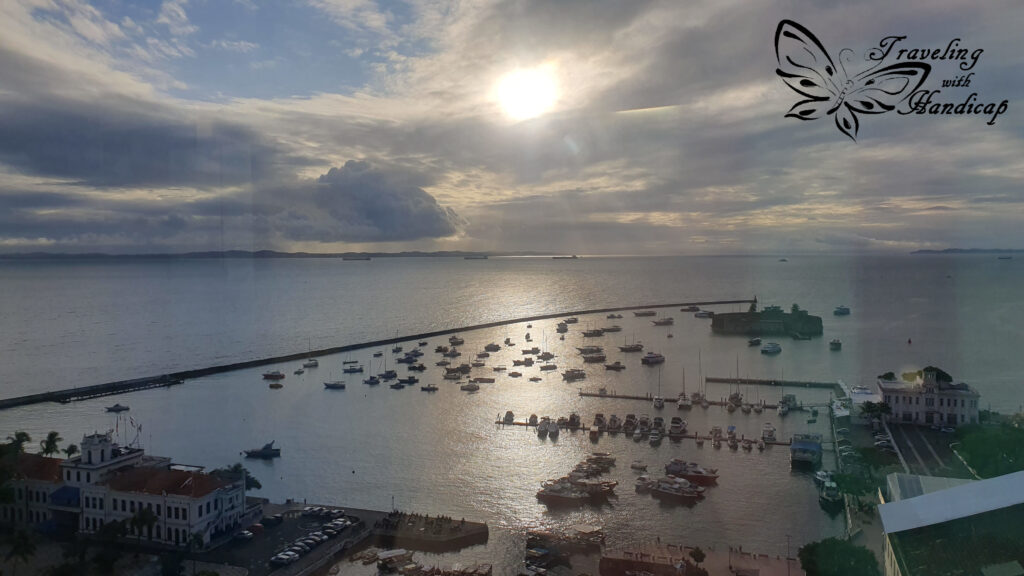
The Cathedral of Salvador
The cathedral of Salvador (1672) should be visited as it’s the cathedral. Well, it’s only big but not overwhelming. I actually liked it more from the outside than the inside. However, I might have been biased as I’d visited the Church and Convent de Sao Francisco before which is truly stunning.
Church and Convent de São Francisco
There are churches literally everywhere in Salvador, you will not manage to visit each one within a trip. You don’t need to visit all of them, I mean, they are just churches. Nevertheless, if you only want to visit one, pick this one. The church of San Francis is special because of its architecture and the amount of gold used.



Pelourinho with the Church of our lady of the rosary of the black people
Pelourinho, the cultural and touristy center of Salvador, is part of the UNESCO World Heritage Site since 1985. Along this road, people might cook on the streets, play drums, dance and much more. My favorite place and event in the Pelourinho was visiting the church of our lady of the rosary of the black people during a mass.
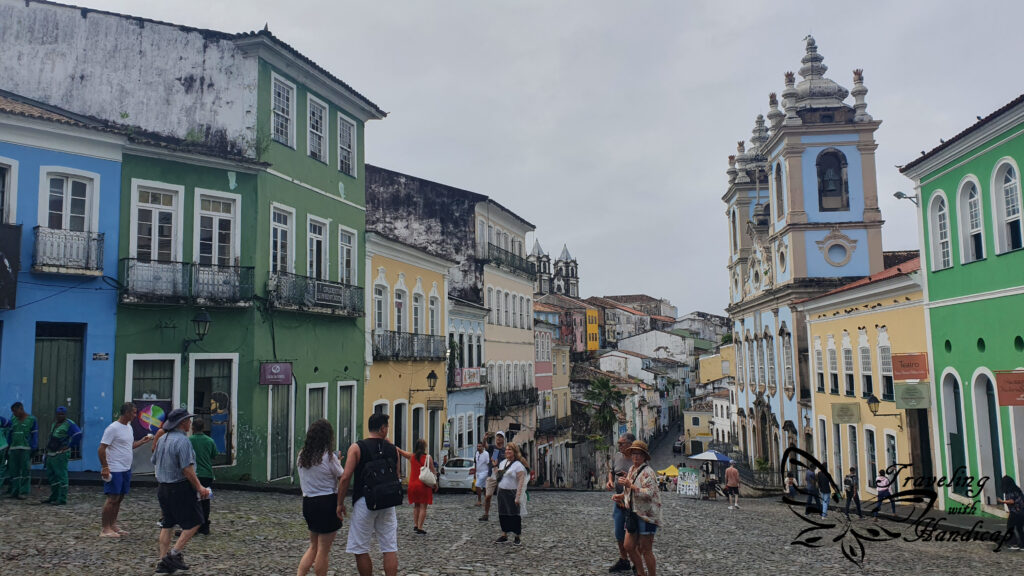
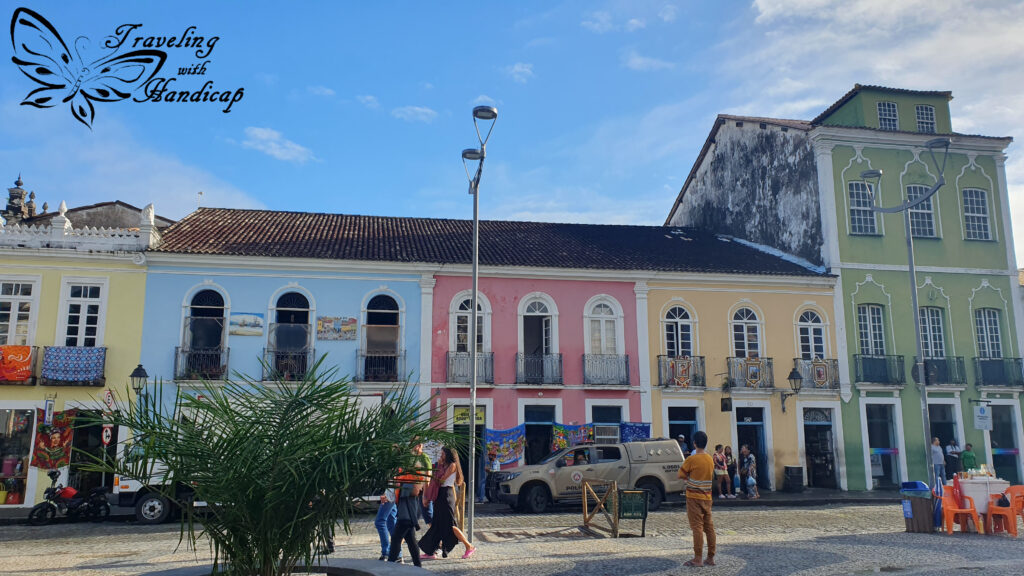
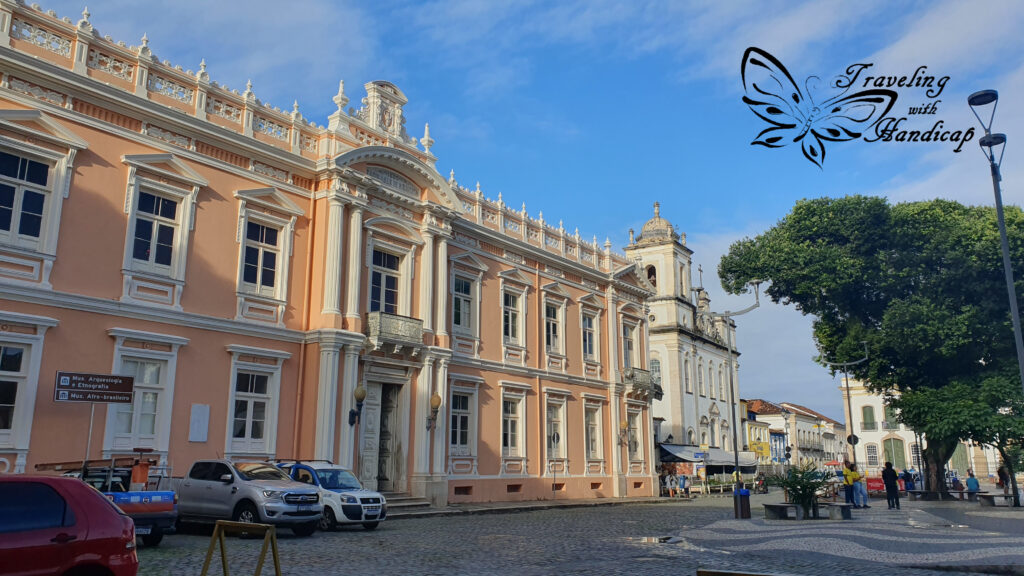
I am not sure whether it is possible to visit this church during other hours. Nevertheless, attending the mass is great, even if you have no connection to any religion. It is more like a fest with drums and singing and dancing. Many tourists attend the mass, and it is completely normal to use your phone and take pictures or videos.
This church has been build by and for the black people who were not allowed to attend a mass in the church “of white people” at that time. Since then, this church is a meeting point for black people. Moreover, the statues in the church are black which made me wonder why all statues in European countries are white – even though the represented people were most likely not as white as represented.
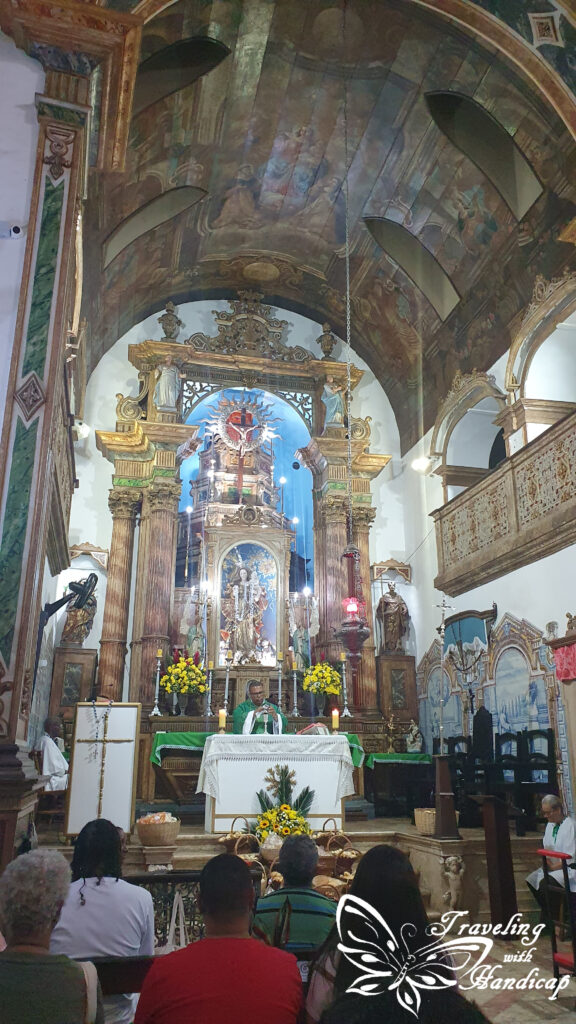
Casa do Carnaval

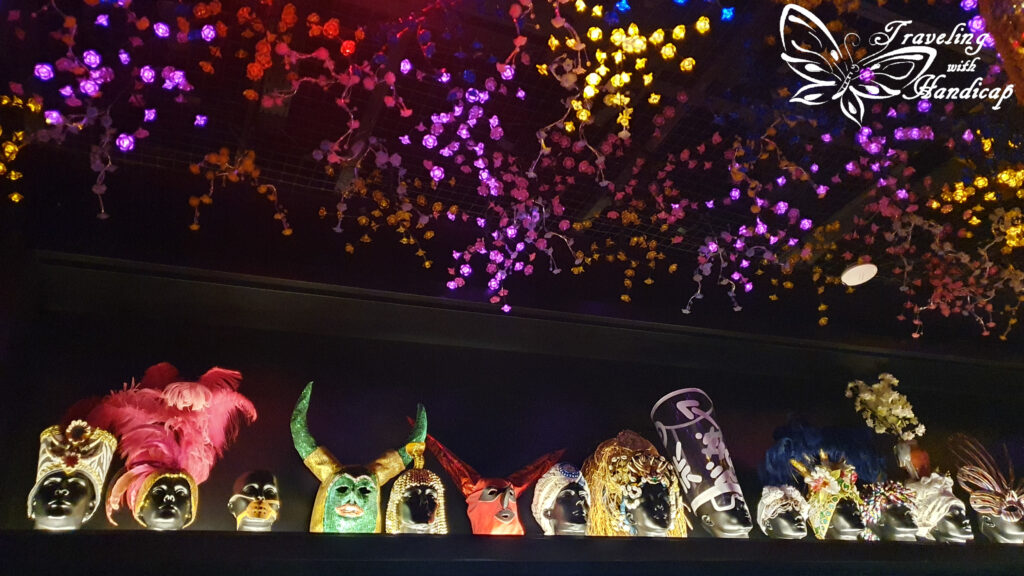

The Casa do Carnaval is a museum of Carnival. You may take a headset and listen to explanations in either Portuguese or English. I listened to some of the first ones. Honestly, I’m not really interested in Carnival. Nevertheless, I recommend visiting this museum as it has a great rooftop terrace enabling good views for the sunset.


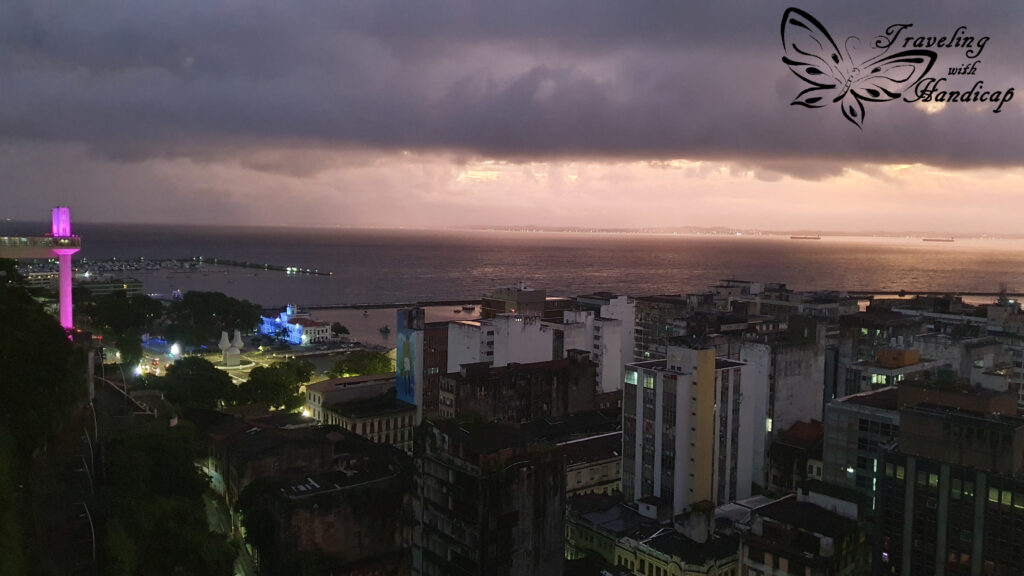
African influences, traditions, and dances
The population of Salvador is manly dark. This is why the traditions from Africa are very present in Salvador. You may encounter their influence within food, dances, and other traditions. Famous dances with African (slave) origin are among Forró or Capoeira which is more a way of fighting than a dance.
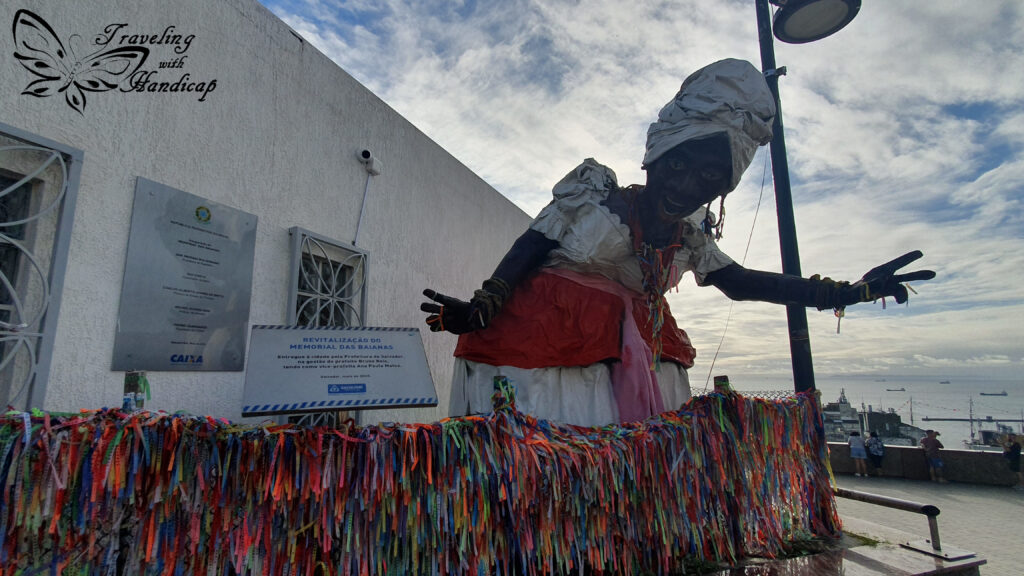
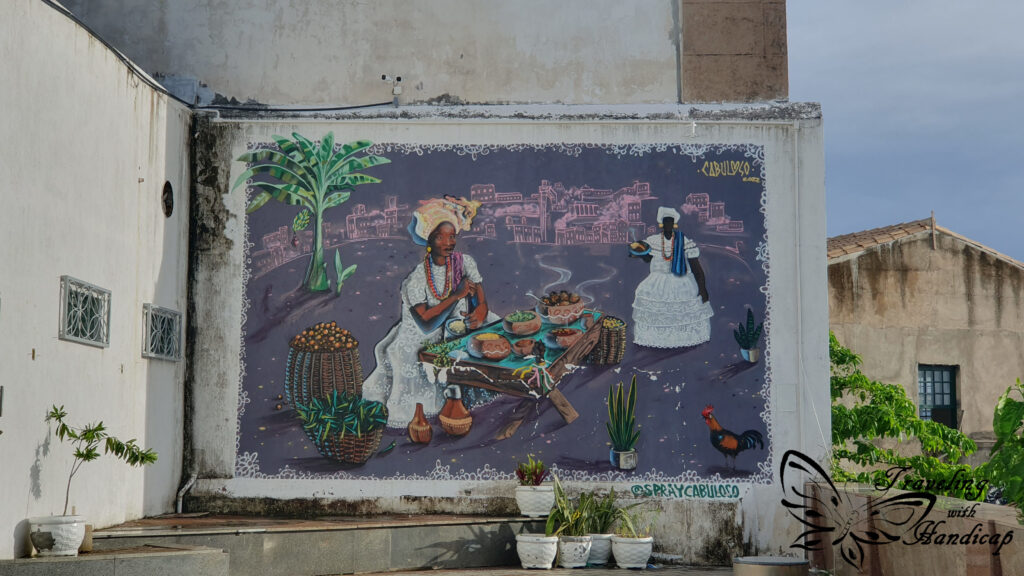

The Balé Folclórico de Bahia has a show every second day with a 1-hour-long performance of different dances and music of African origin.
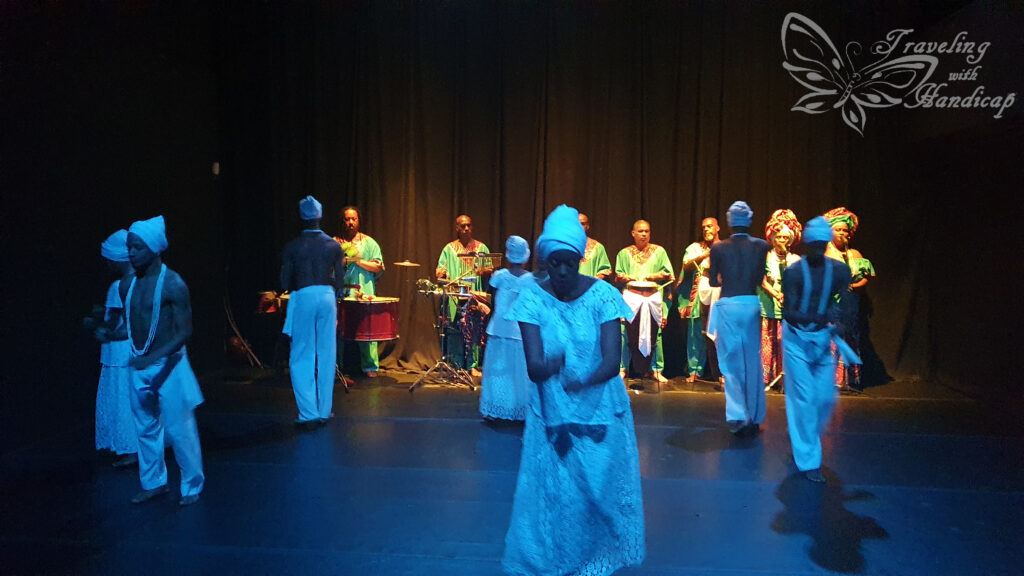
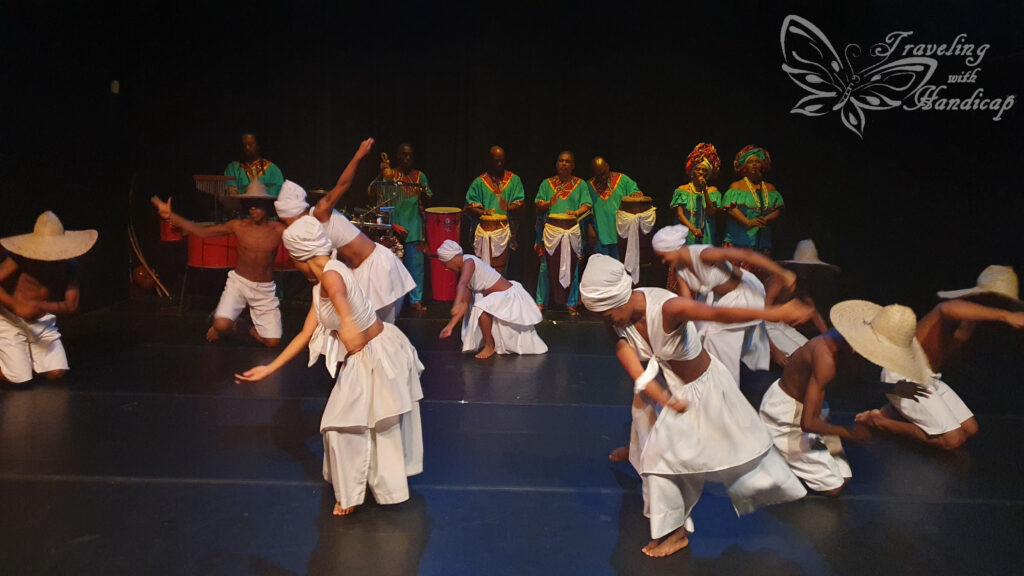
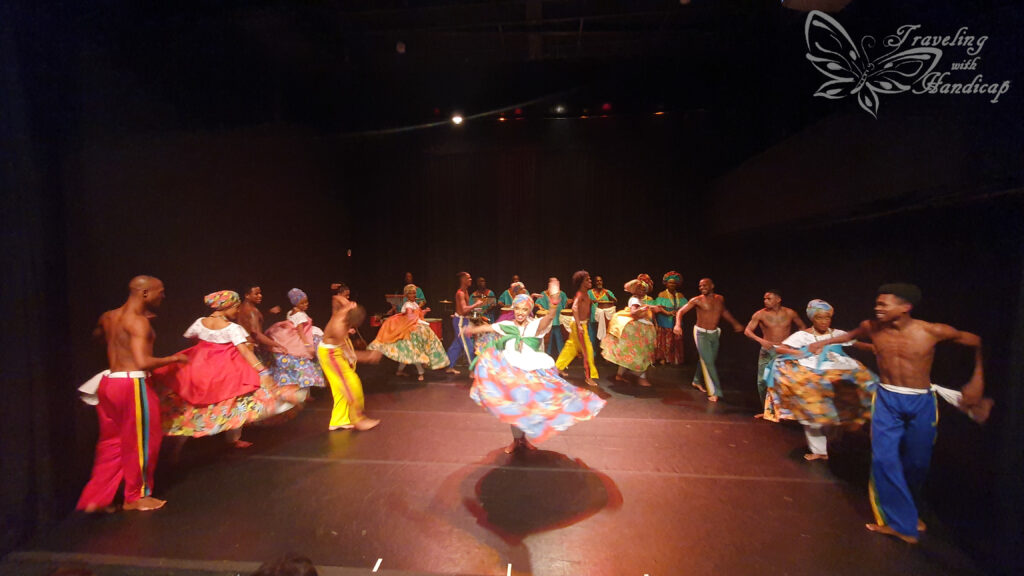
Beaches in and around Salvador
Salvador and the state of Bahia are known for great beaches. Unfortunately, I had some rainy days while visiting Salvador, so I could only watch but not try out the beaches. No matter if you like beaches or not, I recommend visiting the Barra Lighthouse at the southwestern tip of Salvador. This lighthouse contains an interesting museum (better than the Military museum in Rio) and offers great views of the surrounding coastline. From there, you may walk to the Santa Maria Fort. The fort is not special but the walk to it is nice.



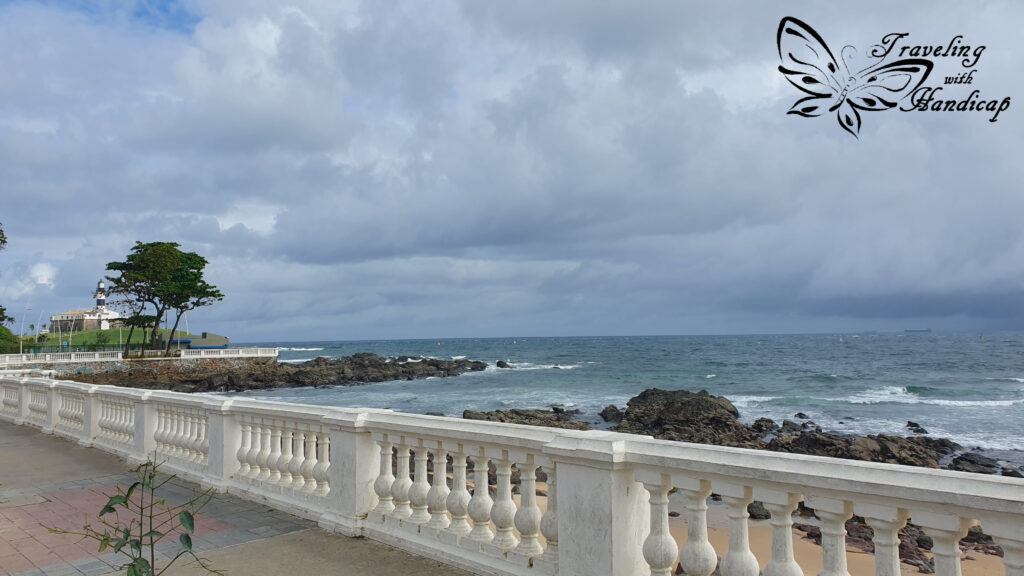
Moreover, after passing the Fort, the Praia do Porto da Barra (beach) is nice having also many restaurants and cafés facing the beach including a great view. Other beaches around Salvador are the Praia de Palmeiras, or Praia de Inema in Ribeira among many others. The ponta do humanita might also be interesting to visit, it’s just further away from the center of Salvador.
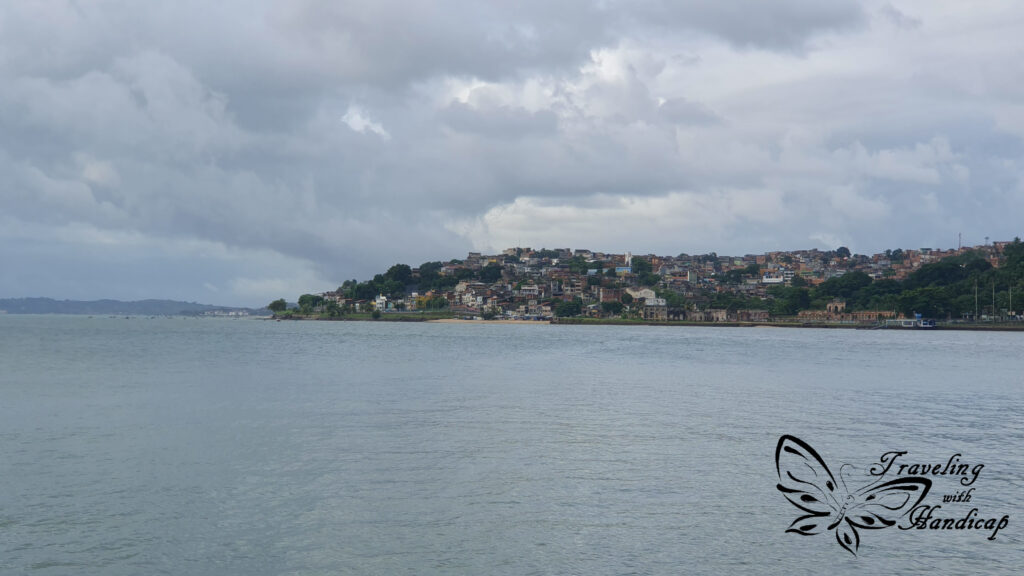

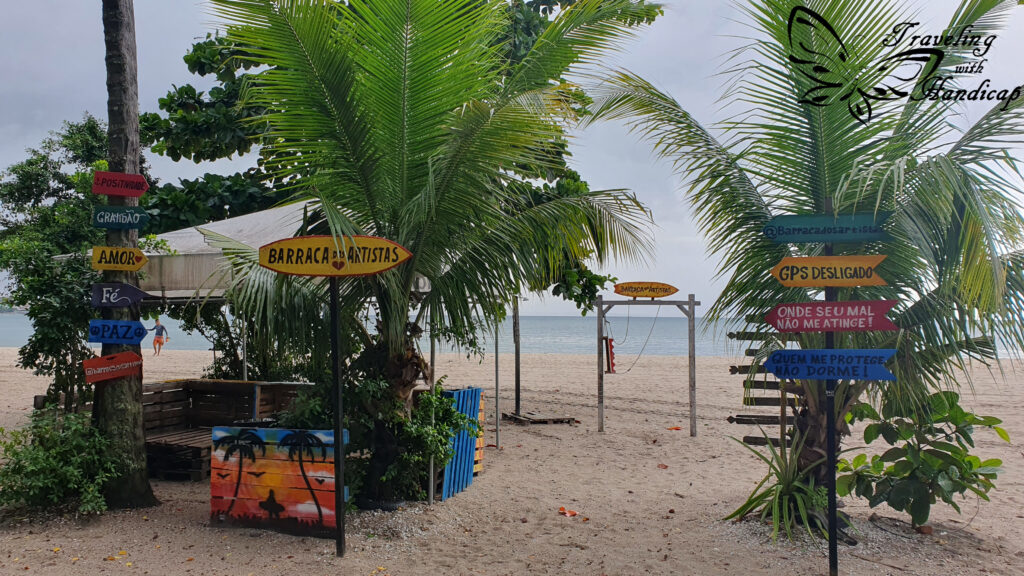
Brazilian food
As already mentioned in the text about Rio de Janeiro, rice and beans are very common in Brazil. Depending on the region you are in, there are other more or less common dishes. Beans were not so much my favorite. I only rarely eat red beans in Germany, so having them as a side with so many meals was quite new. Another well-used ingredient is cassava (→ Wikipedia), a root which is quite dry. It is used for Tapioca or even fries. I assume there are many more dishes with cassava which I don’t know.
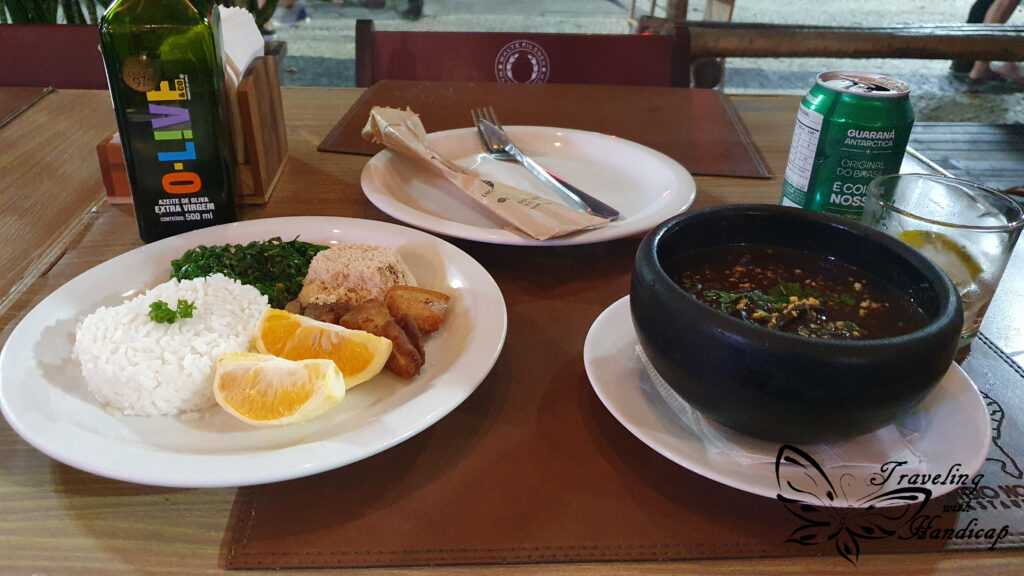
Along the coast, especially in northern Brazil, fish and seafood is very famous. However, more inland, people eat a lot of meat. One reason for why the Amazon forest is destroyed is to grow soy as a cheap food for cattle to provide cheap meat for people. Further up north, for example in Salvador de Bahia, the kitchen has different influences and consists of even more beans and seafood. However, the kitchen in Brasília is rather multinational.
Açaí is a very famous fruit from the Amazon which is available all across Brazil. Actually, I really like to have açai sorbet with granola and fruit.
In order to try out the cuisine of Bahia, I highly recommend visiting the Museu da gastronomia baiana with its restaurante escola senac pelourinho, a cooking school which serves its creations on an affordable lunch buffet. However, if you don’t eat any seafood like me, you might not have many options. This is why shrimp is part of almost every dish – and if not, it contains octopus or other seafood instead. Nevertheless, I really enjoyed the desserts (free of any meat or seafood).
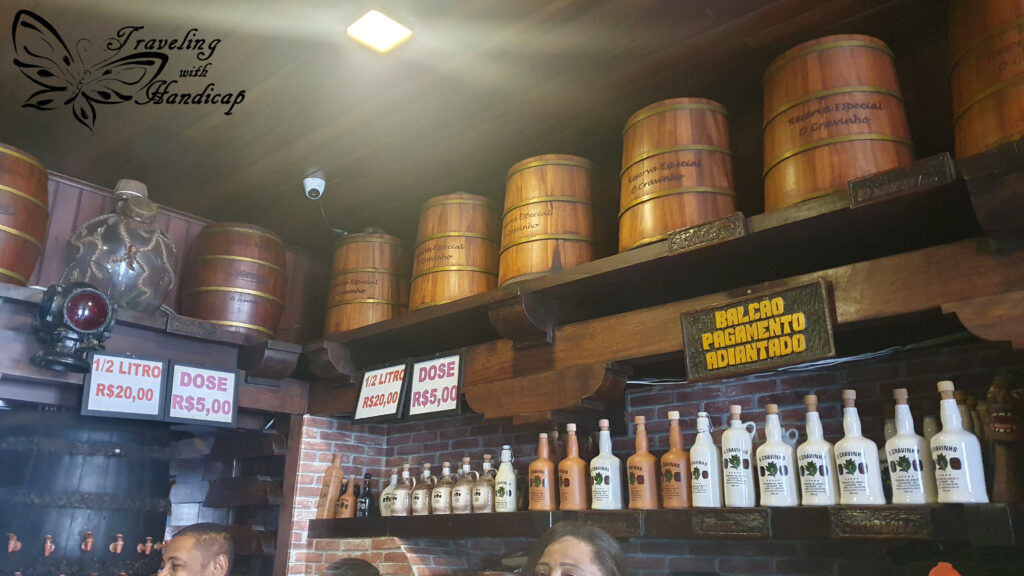
Brasília
Brasília is the federal capital of Brazil as well as the seat of government of the Federal District. It was founded by President Juscelino Kubitschek on 21 April 1960, located in the Brazilian highlands in the country’s Central-West region. This planned city has been developed by Lúcio Costa, Oscar Niemeyer and Joaquim Cardozo in 1956 in order to move the capital from Rio de Janeiro to a more central location. The Federal District is composed of 33 administrative regions while only one is the area of the originally planned city.
The executive, legislative, and judiciary are all located in Brasília now. Moreover, there are more than 100 foreign embassies. The city is designed in sectors for specific activities, such as the Hotel, Banking, and Embassy Sector. In 1987, Brasília was inscribed as a UNESCO World Heritage Site due to its modernist architecture and artistic urban planning.
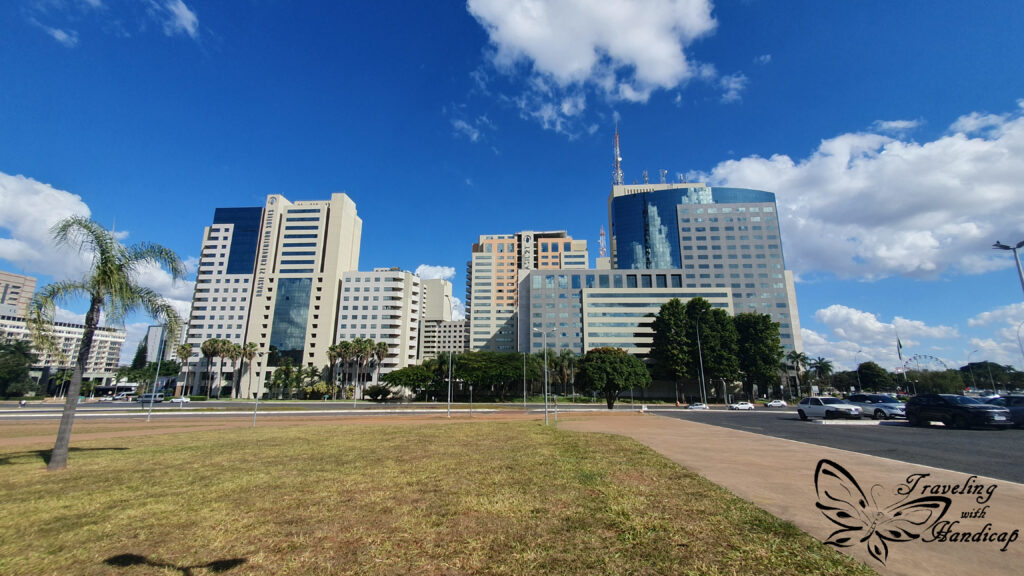
Political Center
The political center is literally the only area with a touristy value. You may visit it within one day. The individual spots are too far away from each other to only walk, so it would be a good idea to pick one of the many bikes available or use bus and Uber for the longer distances. Honestly, there are not many buildings to truly enter and visit.

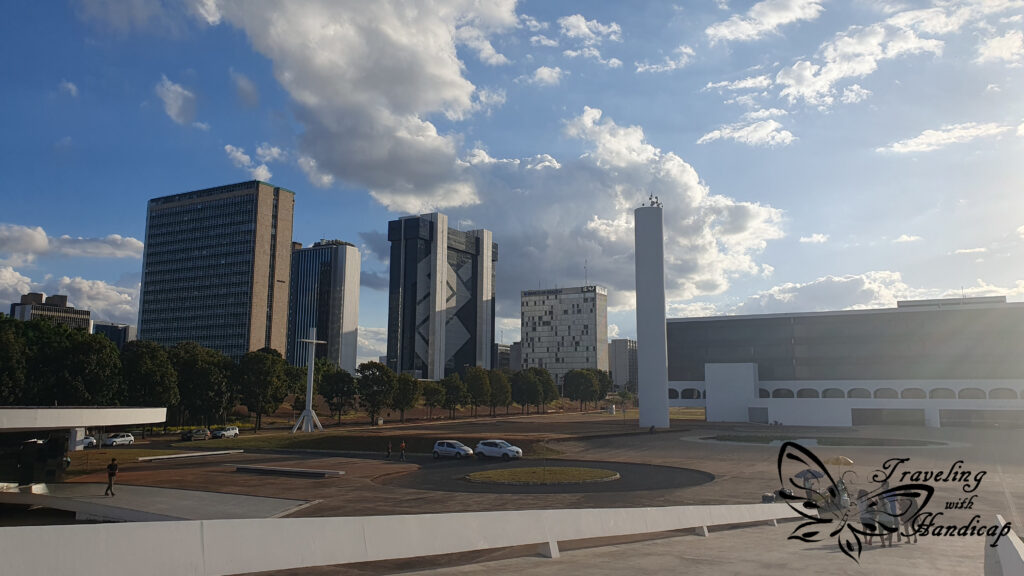

Memorial JK
The Memorial JK is a museum created for Brasília’s founder Juscelino Kubitschek. It contains a former library, a café, and an exhibition. Nicely presented but more important for Brazilians to watch all their medals and stuff. 😀

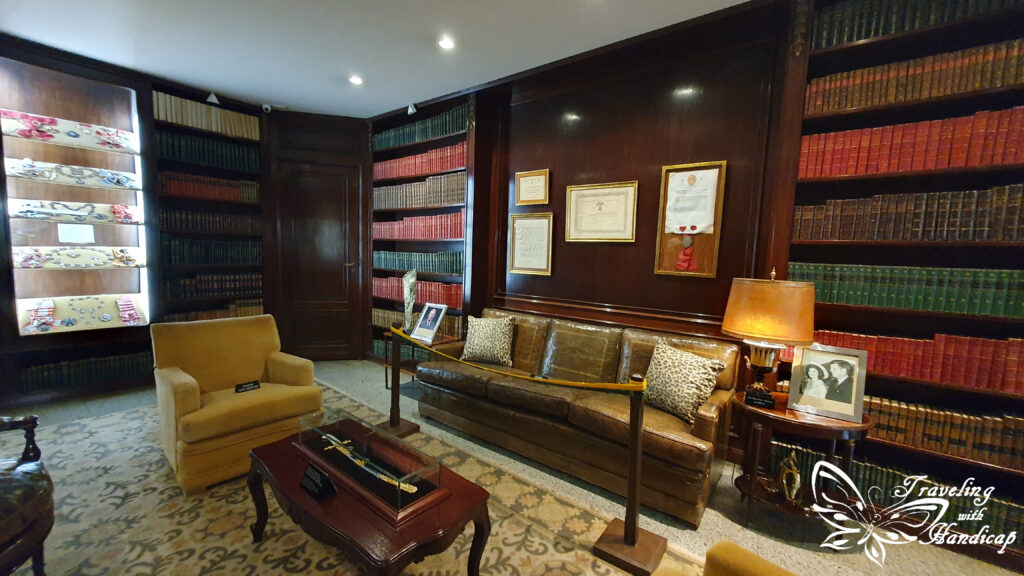

Cathedral
The cathedral is quite special. Similar to the cathedral in Rio, it does not really look like a church if you don’t know it. It also looks quite small, as it is broader on the underground level. You have to walk down a ramp to enter the cathedral. However, when I wanted to visit it, we weren’t allowed to enter as they prepared for a wedding. Honestly, the security staff was stupid as many just wanted to get a few meters further than the entry door for a cool photo. They should have just moved the blocking bands a few meters in but instead received many complaints from angry tourists and tour guides.

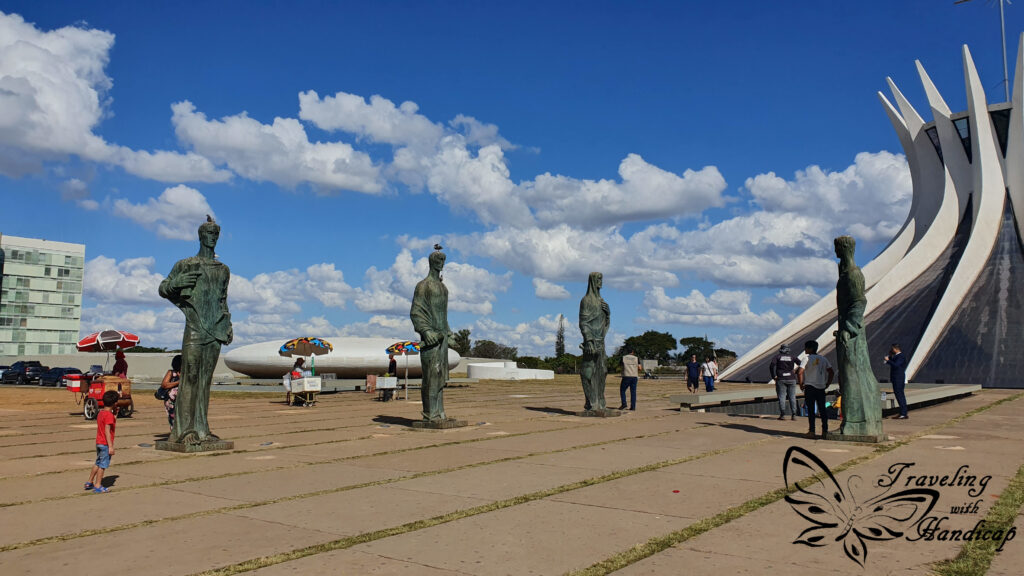
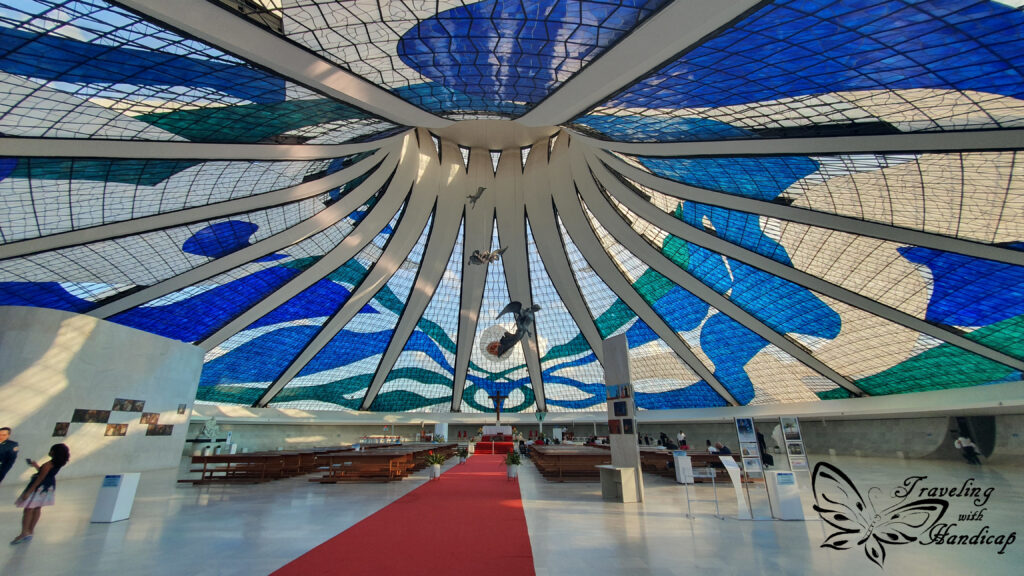
Museo Nacional da República
I am not really a museum person, but I went in because it was an interesting building. Yeah, I went in because of the building and not because of the (in my impression quite limited) two arts exhibitions. It was for free.
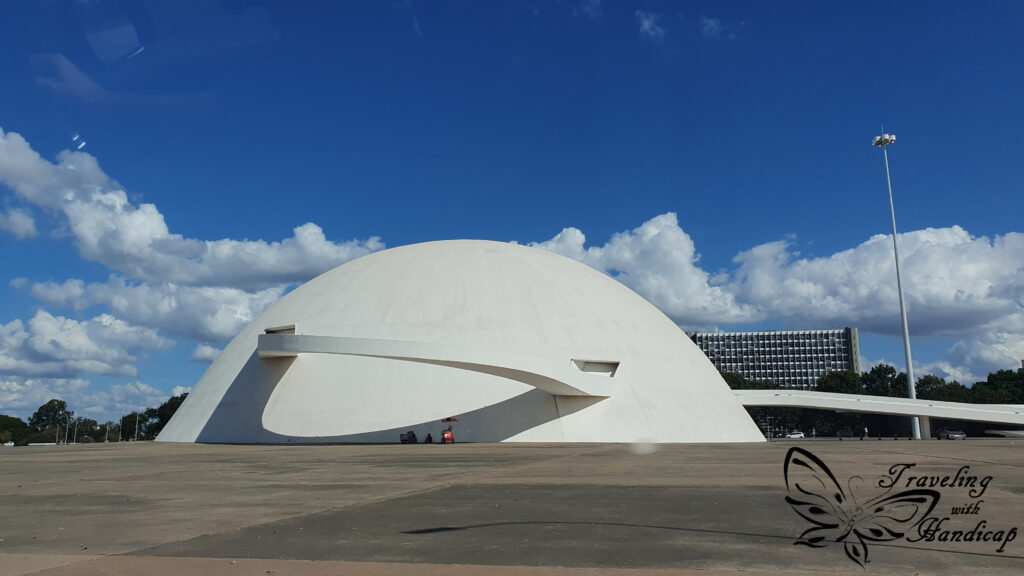
States Avenue including Parliament
The States Avenue is difficult to describe. It consists of very broad roads with many lines each way but almost no traffic. Between the two directions there is a quite big “park” which does not look inviting. There are a few trees but nothing else, it’s not inviting to sit there and have picknick with friends. Along the road, there are multiple ministry buildings until you reach the parliament building at the end.
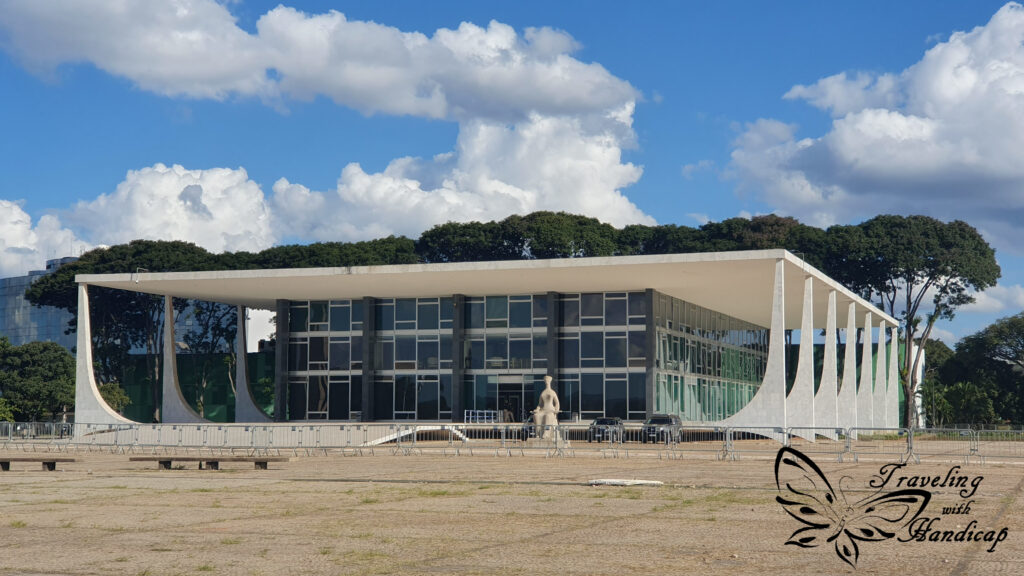
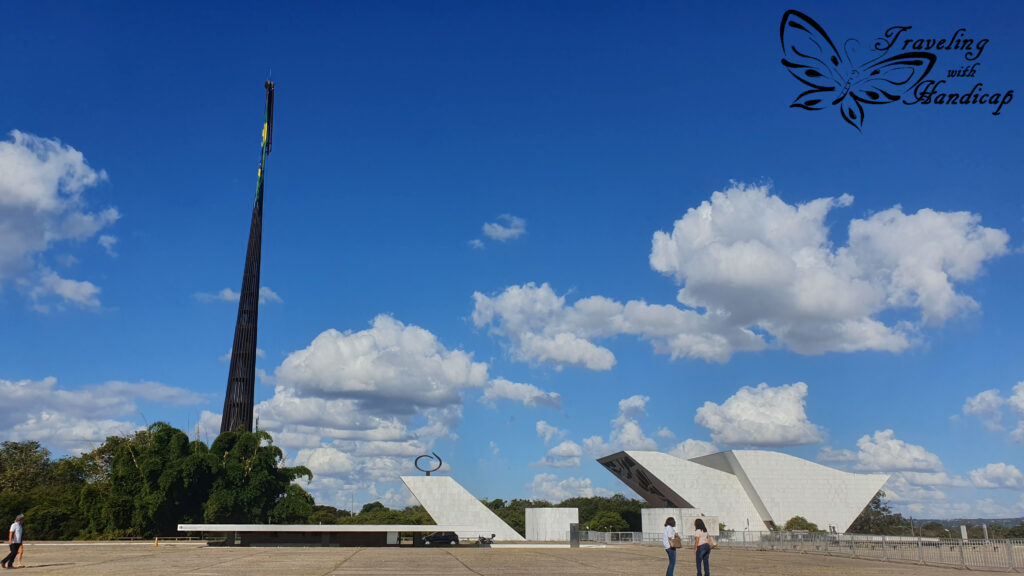


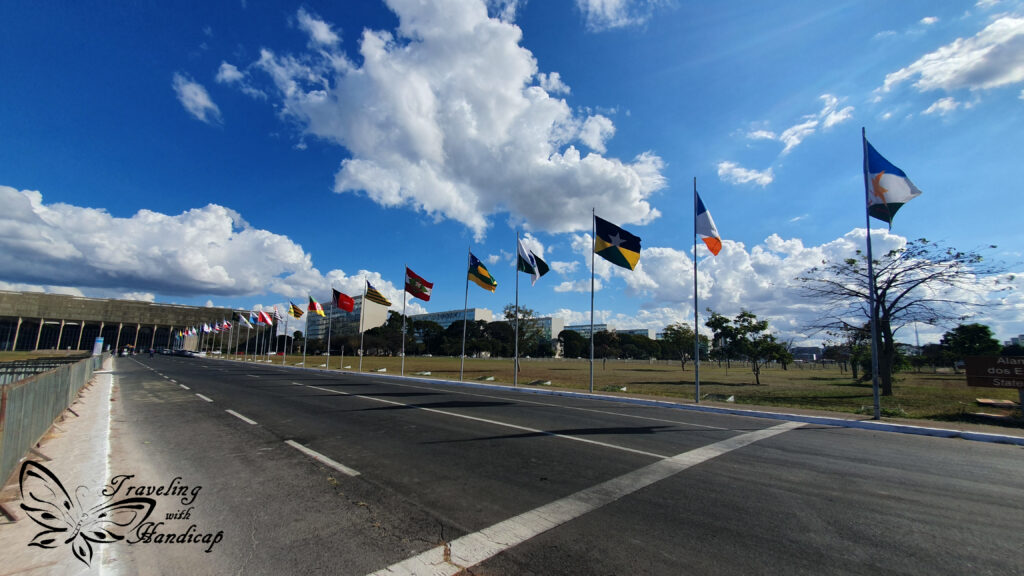
Arena BRB Mané Garrincha
This stadium has been used for the football world cup in 2014. Before, it only had one level of seats, for the world cup it has been extended. There is no first league football club in Brasília, so the stadium is not really used in this context. This is why, sometimes, matches from other teams are in Brasília in order to use the stadium. It is also used for concerts. A few days before I visited, there was a concert. This is why the goals were missing, and the grass looked quite crappy.
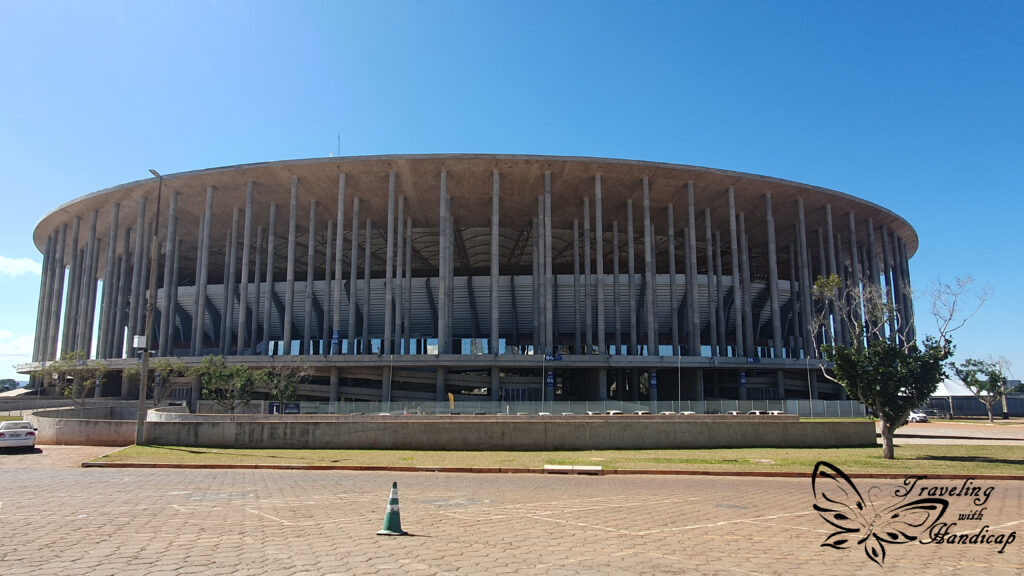

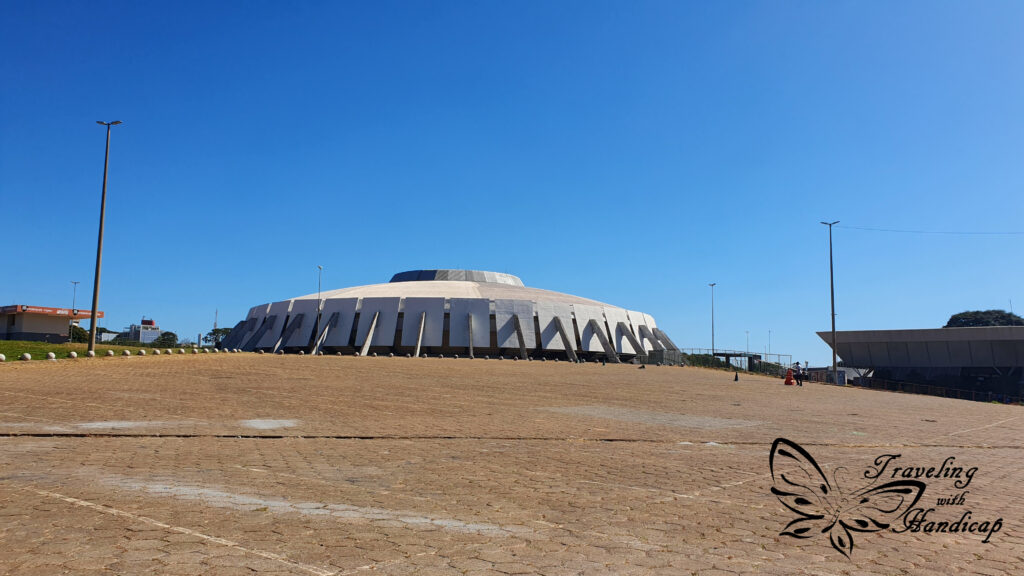
Torre de TV de Brasília
There are two TV towers, one smaller one in the center of Brasília. The other one is located away from the city of Brasília but bigger. In this case I am referring to the TV tower in the center of the city Brasília. This TV tower was my highlight of Brasília. From the observation deck you have a view over the whole planned city center. It is also very nice for sunset views.
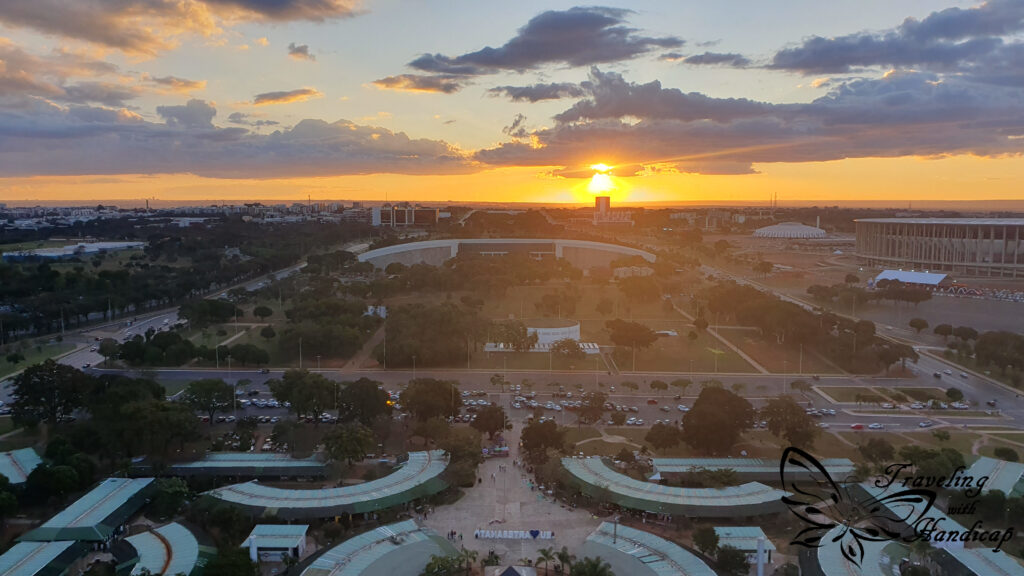


More:
If you stay in Brasília for a second day, you may visit the Lago do Paranoa, the Nicolandia Parque Urbano, the Parque da Cidade Sarah Kubitschek or the Torre de TV Digital (not in the city Brasília). I have not visited any of those spots / places, but other travelers told me these would also be enjoyable.
Furthermore, I rather decided to visit the Parque Nacional da Chapada dos Veadeiros, located approximately 3 hours by car northwest of Brasília. I rented a car with another traveler who I met in the hostel in Brasília. This is why I only spent one day in Brasília. For all that I intended to see, it was sufficient. Since Brasília is literally very far away from all the rest, you should think about if it’s worth visiting. I intended to combine it with that national park. Only for Brasília, it would not have been worth all the time on the bus or money for flights to get there.
Parque Nacional da Chapada dos Veadeiros
The National Park is located near the towns of Alto Paraíso de Goiás and São Jorge. The park is known for many waterfalls and views. However, not all waterfalls are within the outlined national park. There are many more waterfalls in the surrounding area within a distance of 150 km of Alto Paraíso de Goiás. The (in my opinion) best spots within the national park are quite close to São Jorge. Therefore, staying in São Jorge would offer a short driving distance to the respective entrances and starting points.
Different people recommend different places. We were recommended the Loquinhas for the rest of the first day. However, these were quite underwhelming. Just some little gorges to swim in and chill while having a smoke. This was not the type of adventure we wanted to have, we wanted to go hiking and have great views.


Hiking
From the Park entrance close to São Jorge, you may start different tracks. We decided to go for the Caroquinhas and Canion II while another one is to Corredeiras and Saltos. There is even a multi-day hike from that entrance, but you have to register for it. And I am not sure how much you pay as an entrance fee then and what they want you to or not to bring into the national park.
This hike was rather simple even though I read on Google reviews that it would be so difficult. Only the very end, to get down to the Caroquinhas, is difficult, but you don’t have to go down all the way if you don’t want to go swimming. The remaining hike was easy. Nevertheless, due to the heat and lack of shade, it was tough to keep walking.
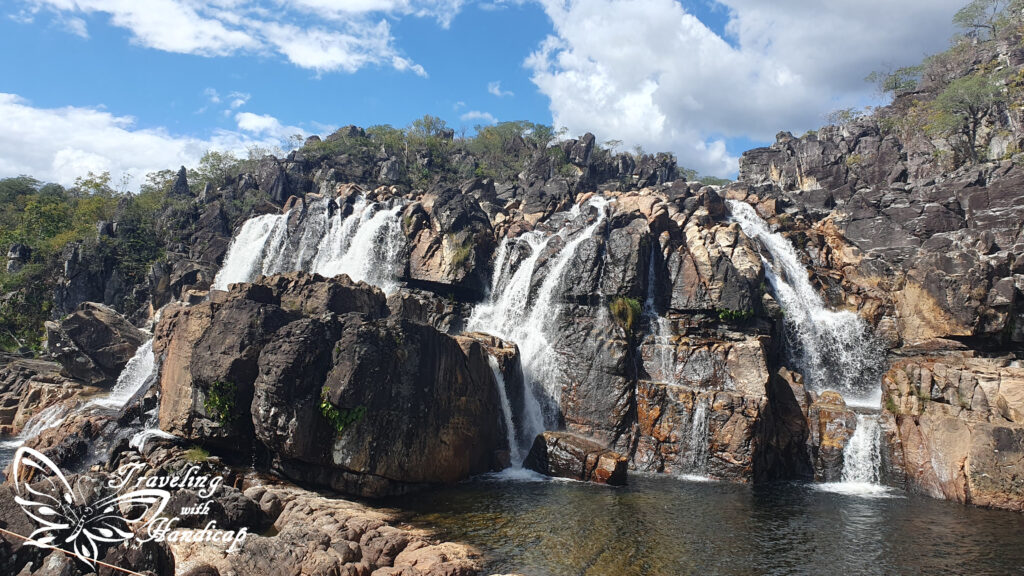
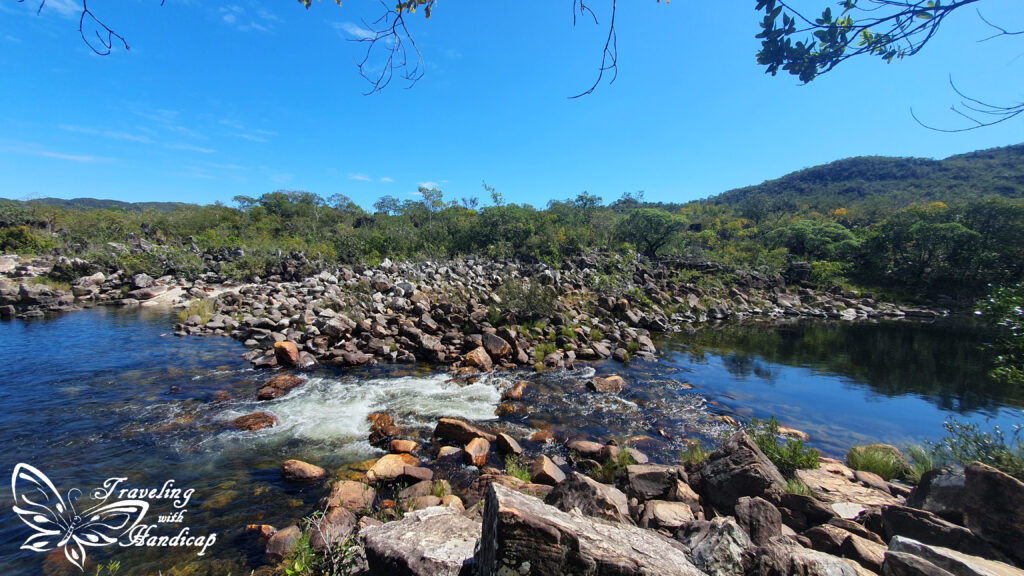

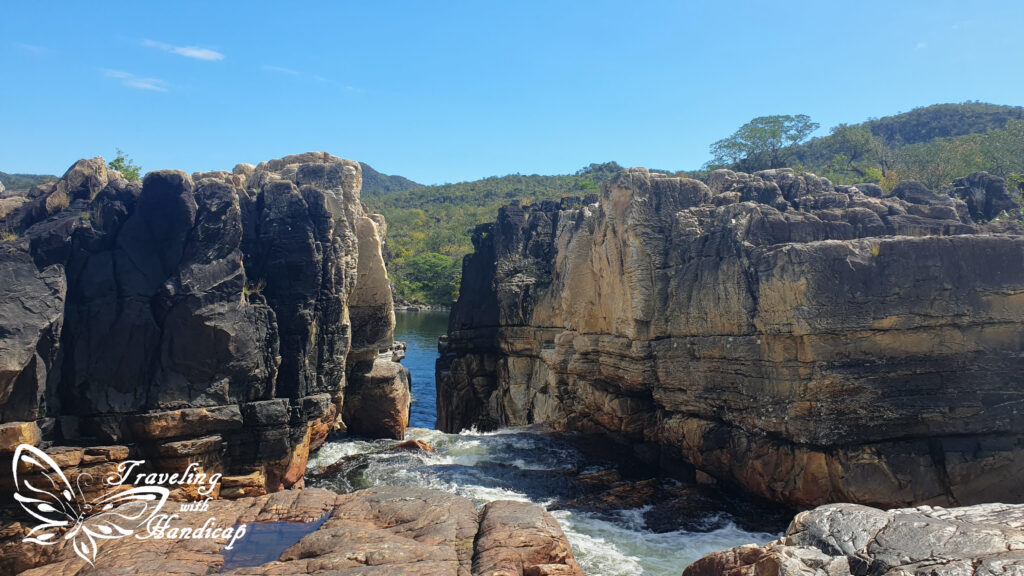
When we drove to the parking of the Mirante da Janela, we learned that this is no viewpoint next to the parking (maps is misleading) but rather involves a 3.6 km hike. This is why we started with this hike in the morning of the other day, to avoid strong sun. Actually, this hike was definitely medium difficulty, but so much more beautiful than the Caroquinhas and Canion II hike. You had a great view most of the time, of the panoramic landscape. And at the very end, rewarded with a viewpoint that was just cool.
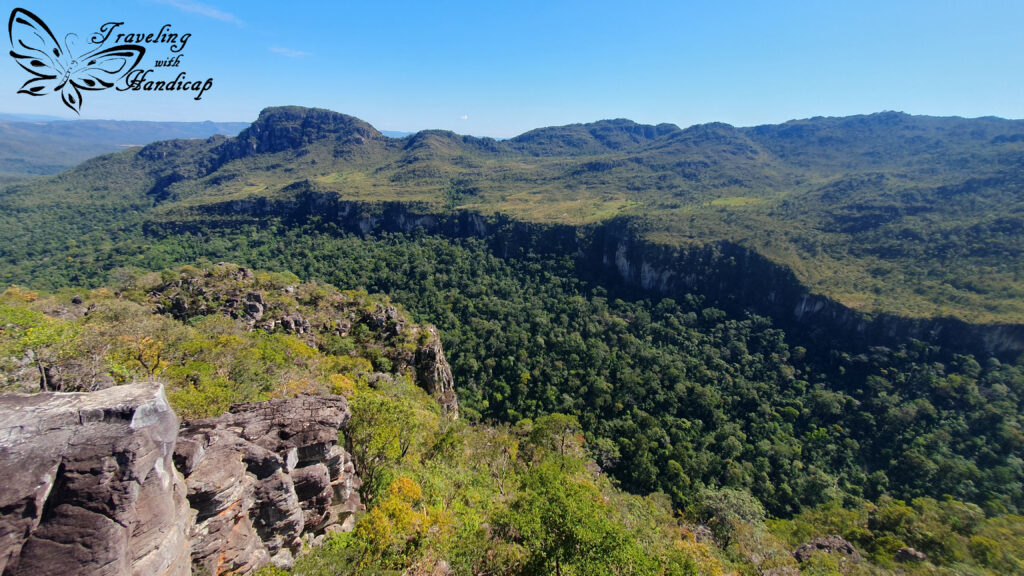
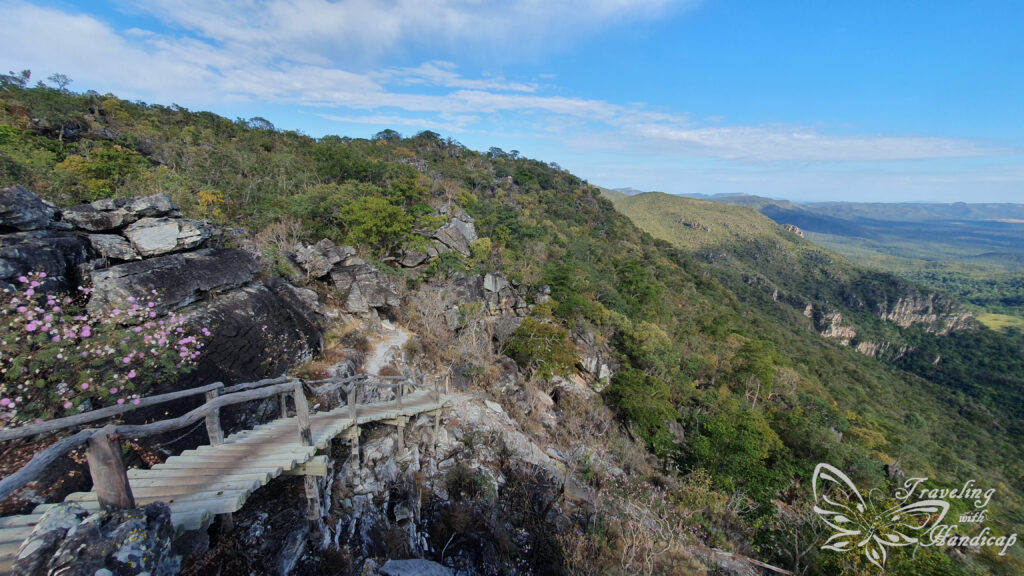


Bar do Mirante
Another highlight for me was the Bar do Mirante. An outdoor bar located quite close to the Mirante da Janela offering a stunning sunset view. The bar opens in the late afternoon, and you pay a fee for entering. For this fee, you may take a seat, chill, watch the landscape, and the sunset while listening to great chilled music. You may get a drink but don’t have to. All the types of chairs are set up in a way that you may watch the sunset.


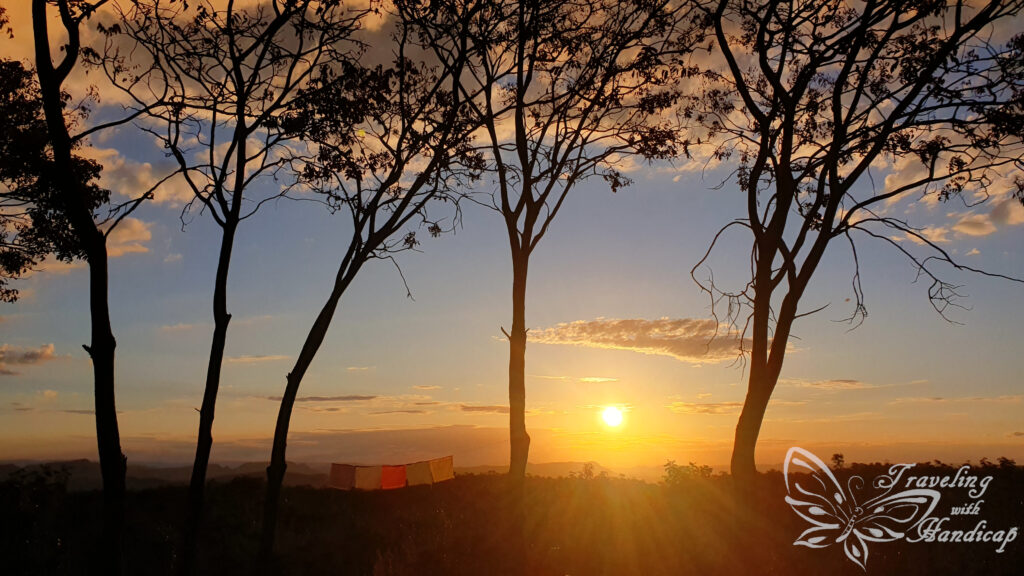
Vale da Lua
The valley of the moon is another must-see spot in my opinion. It does not require any true hike but offers quite interesting stone formations formed by water. There is also one spot where you might swim in the chilly water. I did, however, I got bitten by some weird bugs while not wearing skin-protecting cloths.

